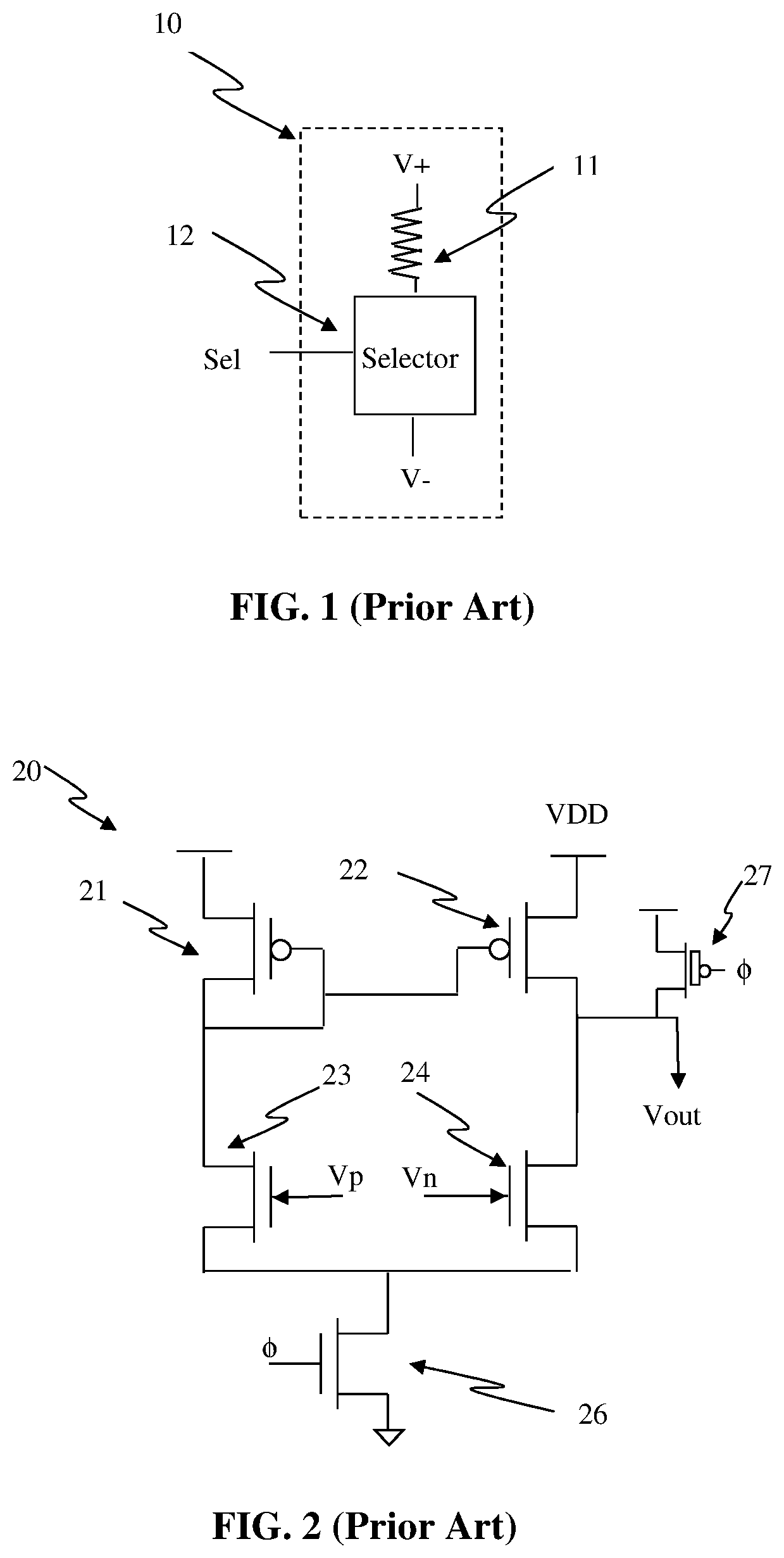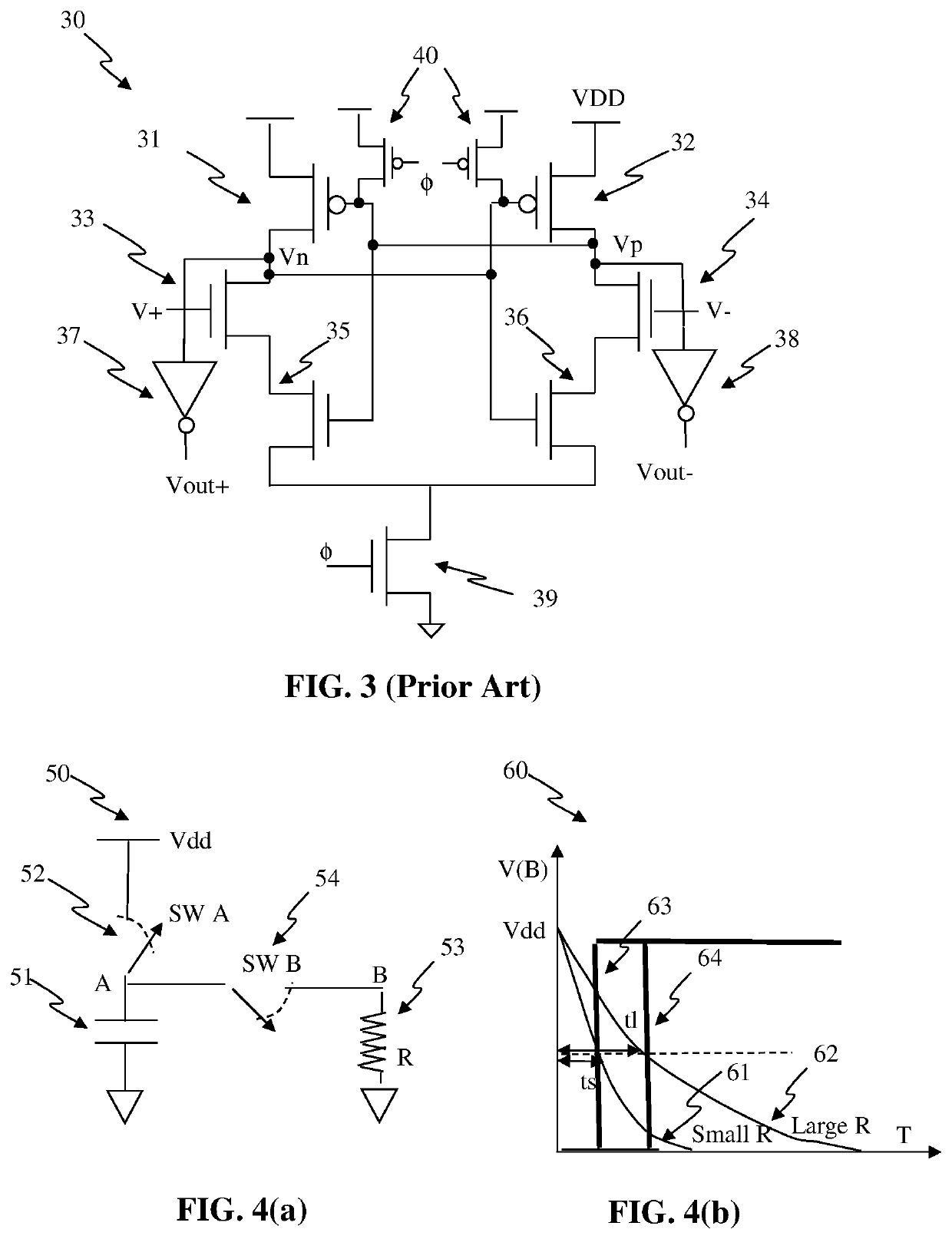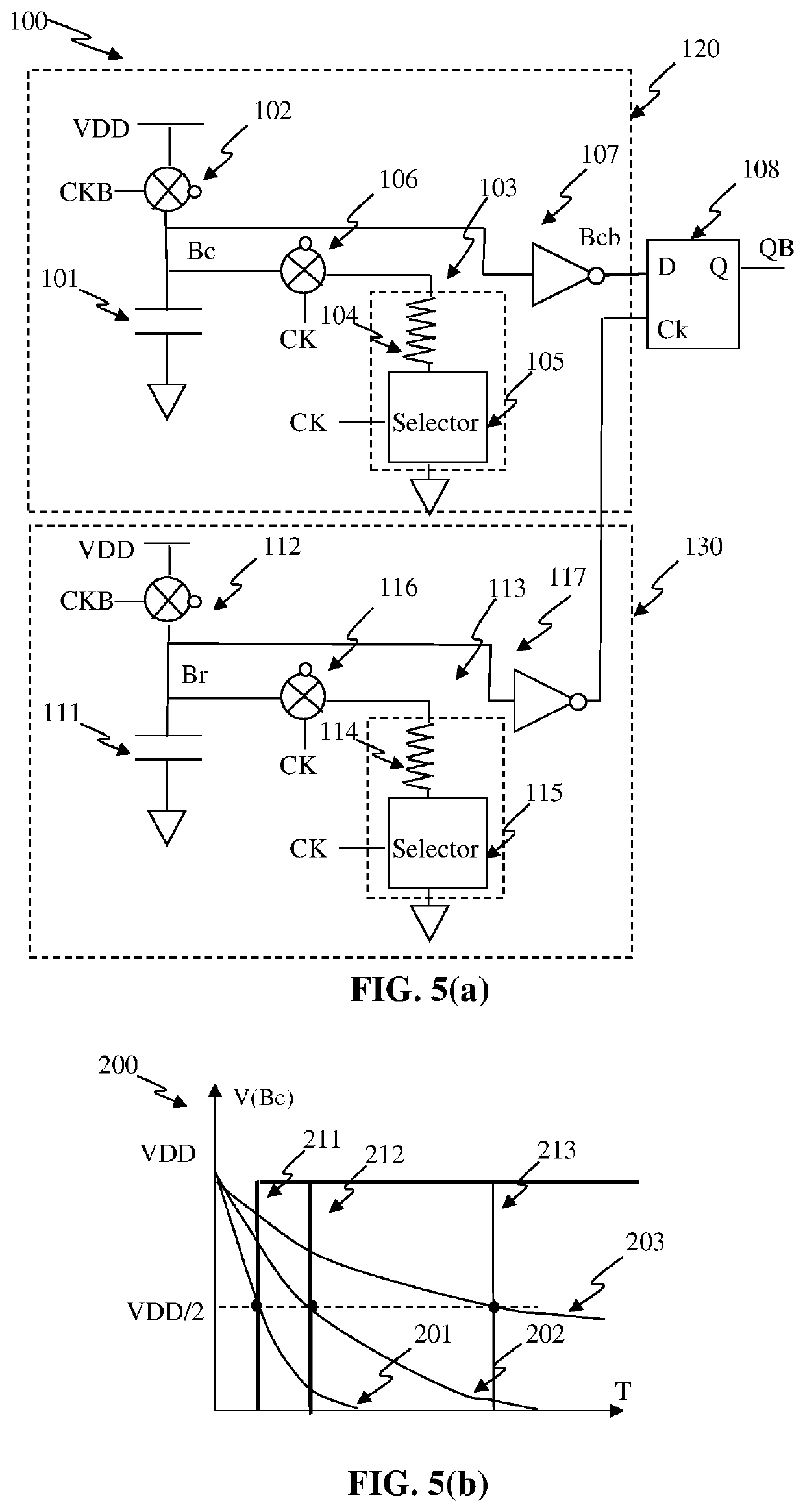One-time programmable memories with ultra-low power read operation and novel sensing scheme
a one-time programmable memory and ultra-low power read operation technology, applied in the field of sensing circuits, can solve problems such as increasing resistance, and achieve the effects of saving current, increasing resistance, and prolonging time delay
- Summary
- Abstract
- Description
- Claims
- Application Information
AI Technical Summary
Benefits of technology
Problems solved by technology
Method used
Image
Examples
Embodiment Construction
[0045]Embodiments disclosed herein use capacitors discharging through programmable resistance element (PRE) to evaluate a programming state. By comparing a discharging time to reach a predetermined voltage, a resistance of the PRE can be converted into a logic state. The discharging time can be compared with a discharge time provided by a separate unit that used a reference resistance. In one embodiment, an OTP with ultra-low power read can be programmed with a minimum and a maximum program voltage. When programming within the range, the post-program OTP to pre-program resistance ratio can be larger than N, where N>50, so that more sensing techniques can be used to reduce read current. The minimum and the maximum program voltages to achieve the desirable high ratio can be found by programming a portion of OTP cells starting with a relative low program voltage, and incrementing the program voltage until the programmed OTP cells are verified as passed and achieving the high resistance...
PUM
 Login to View More
Login to View More Abstract
Description
Claims
Application Information
 Login to View More
Login to View More - R&D
- Intellectual Property
- Life Sciences
- Materials
- Tech Scout
- Unparalleled Data Quality
- Higher Quality Content
- 60% Fewer Hallucinations
Browse by: Latest US Patents, China's latest patents, Technical Efficacy Thesaurus, Application Domain, Technology Topic, Popular Technical Reports.
© 2025 PatSnap. All rights reserved.Legal|Privacy policy|Modern Slavery Act Transparency Statement|Sitemap|About US| Contact US: help@patsnap.com



